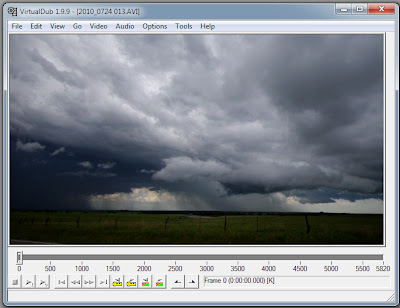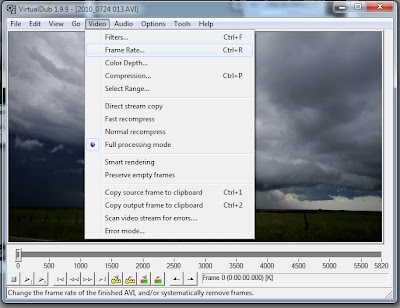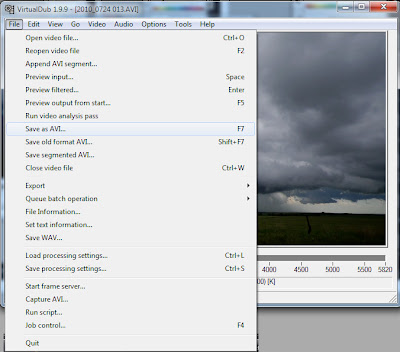One of the questions that I am often asked is "How do you get such great lightning photos?" The next question is usually "How can I get shots like that? I have tried but I keep missing the strikes because I am not fast enough."
Well the answer to that is a lot of luck but it is not quite as much about luck as it is technique though you can help increase the odds of getting a strike by making sure you have what it takes to get the job done. First of all this is a digital camera guide. Film is basically the same but has more limitations in getting that great lightning shot.
#1 - Your camera will need to have the ability to be focused manually.
#2 - Your camera will need to have the ability to hold the shutter open for a length of time.
#3 - You will need a steady tripod.
#4 - You should have a cable release. (required for bulb mode)
#5 - The ability to turn off your cameras noise reduction. (Not mandatory but recommended)
The reason for the manual focusing camera is that it will be dark and you will need to be focused out at the point of the storm. An auto focus only camera will not be able to do this in the dark. You will be holding the shutter open for extended periods of time is the reason for a camera with a shutter setting or preferably a bulb setting.

First of all the most important item is common sense. Lightning can kill you, a lightning photo is not worth your life. Remember that lightning can reach out over 15 miles from a storm and take you out. I can tell you how to get the shots of lightning but cannot keep you alive, that is up to you.
One of the branches from the photo on the left landed 6 feet from my head on a weather instrument pack on a small shed where I was shooting. The main branch landed in the middle of a housing area near the lake.First of all to capture the lightning you will need a storm. Once you have that the best time to get lightning shots is on the approach of the storm and especially if you can get situated just outside of its path. Most lightning shots are taken after dark, this is the easiest way to get lightning photos so we will be covering that first. Get in a good spot that you can get out of once it starts raining. The better spots will be out in the country where there is little or no light pollution and distant lights in your field of view. You can have light in your field of view but the more of them there are and the closer they are the less time you can keep your shutter open.

When you found the spot you want to shoot from you should consider different features like distant hills or tree lines etc that will enhance your picture but keep in mind that having a flat horizon in front of you will be the best for capturing ground hits and such in the distance.
Foreground objects are nice if you are mainly getting cloud to cloud lightning like in the photo to the left. Set up your tripod in a steady manner as wind will usually be blowing with the approach of a storm and it will be harder to keep it steady, if you have no lights in your field of view this is not so critical as the lightning will be the only light source that might show motion over time.
Once you have the tripod set up and the camera mounted you are almost ready to go. Its as easy as holding the shutter open and waiting for a strike.... Well mostly, you will still have to learn some of the important things over time to help get more consistent shots but here are some starting points. First of all I shoot at ISO:100. If something is real distant you may want to increase this some but remember noise is your enemy and time lapsed shots are where that increases fast. Make sure your noise reduction is turned off on your camera or you will be waiting half of your shooting time for the picture to process.

You will find that one of the biggest problems will be shots that were too bright for your settings and therefore blown out and there is no way to recover those shots. I would suggest a setting of f:3 to f:5 ish for the distant stuff and f:5 to f:8 ish for stuff getting closer.
Rain around the strike can make it brighter as seen in the photo to the left. I have had shots blown out at f:19ish but those strikes are a block or two away or closer and at that point you have been flirting with death for a while and I do not recommend it. I have had strikes within a 20 foot area of me on a few occasions and can tell you that I have been more than lucky at that point. God needed me here for something else is all I can figure. You may not be so lucky.
Once you have your camera settings as you want them you will need to verify your focus is at infinity (don't forget many lenses can go past infinity so if you can find a distant light to verify your focus that is a good thing to check). Get your camera aimed at the storm and make sure the the horizon is level. If you are using a camera with a shutter setting set it at 30 seconds (if it is dark enough or adjust to less as needed) and fire away. The preferred method here is a cable release cord and a bulb setting and if dark enough go a minute or maybe 90 seconds at a time. Your camera will limit you here depending on it's noise levels.

Here is the point you have a decision to make, are you going for single strikes or multiples?
The shot to the left was actually a single strike that was multi branched but the same effect is possible by leaving the shutter open longer.I personally like single strikes and therefore release the cable after a strike and usually check it in the viewer for correct exposure and adjust as needed and fire of the next shot. If you are shooting for multiple strikes you can keep the shutter open for longer but you need to consider a second or third strike has the chance of blowing out previous shots. Remember to keep your time down so that you manage noise and light pollution.

Now daytime shots provide a completely different problem because you cannot use a bulb setting and the maximum time you might be able to keep the shutter open will be a second if you are lucky and that will usually be in the late evening or a very dark storm scenario. In this case you would need to start shooting away and hope you have some good luck. A storm with intense and frequent lightning would certainly help however. A camera with continuous and fast shooting and a locked cable release is the ticket to shooting in these conditions. You will definitely rack up some shutter wear and tear with such a method but if you are real lucky you can get an excellent colorful daytime shot.

This little guide should help you get started in lightning photography. Your options for using lightning in various shots is pretty much limited to your own imagination. Myself I am still trying to perfect a sunrise or sunset lightning combination shot. I have had a few close encounters like the lightning at sunrise to the left but nothing to make me consider it accomplished yet. I also try to combine it with other things when ever possible.

This photo I had taken in the past was not a great photo for quality but had many different elements combined in one photo. You can see the remaining colors of the sunset over the lake in the lower right corner while lightning was striking in the left bottom corner with a very bright half moon lighting the sky and the top of the distant cell while having many stars visible over the entire scene.
There are still many scenes I want to accomplish with my lightning shots which range from tower and building strikes to a distant storm under a meteor shower etc. These scenes will be a little harder to catch in some cases and some will be near impossible in others but not completely impossible so I will keep trying. Just remember to be safe, lightning and other storm photography can be a rewarding hobby but it can be very dangerous as well. Play it safe to shoot another day.
Many of my photos are available for viewing and are also for sale on my website at
KansasHorizons.com and others are available for viewing on my
flickr.com/photos/kansashorizons site.
































